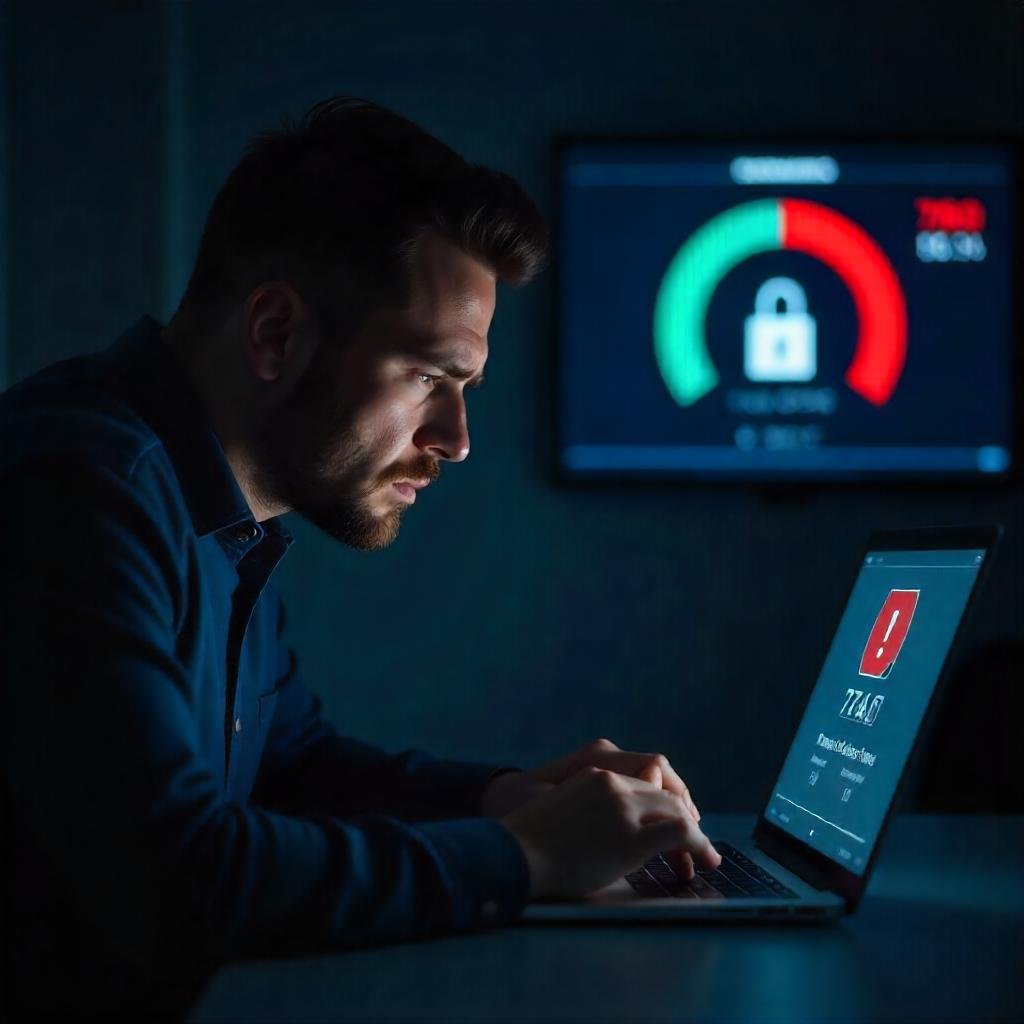Your credit report is the blueprint of your financial life. It determines your eligibility for loans, credit cards, insurance, rentals—even job applications in some countries.
But in 2025, identity theft and credit reporting errors are at an all-time high, affecting millions globally.
If left unchecked, even a single wrong entry can drop your score by 100+ points — or worse, block access to essential financial services.
In this guide, you’ll learn:
- How to detect fraud or reporting errors
- How to dispute false information
- How to protect your credit identity moving forward
🧠 Why Credit Report Accuracy Matters

Your credit score is calculated from your credit report. If the report contains:
- Outdated loan accounts
- Accounts that aren’t yours
- Incorrect payment history
- Unauthorized hard inquiries
…then your score suffers — and you pay the price.
A damaged credit report can lead to:
- Loan and credit card rejections
- Higher interest rates
- Lower credit limits
- Insurance denial
- Housing application denials
- Identity verification issues
✅ Keeping your credit report clean = financial reputation protection.
⚠️ Most Common Credit Report Errors in 2025
Here are the most frequent errors consumers are spotting today:
| Error Type | Examples |
|---|---|
| Identity Mismatch | Wrong name, date of birth, or social security/NIN number |
| Duplicate Accounts | Same account listed multiple times |
| Unauthorized Accounts | Accounts opened by someone else in your name |
| Incorrect Balances | Closed loans marked as open, wrong outstanding balance |
| Late Payments in Error | Payments marked as delayed even if paid on time |
| Wrong Status | Paid loans marked as “Settled” or “Charged-off” |
| Unknown Hard Inquiries | Lenders you never contacted pulling your report |
| Mixed Reports | Another person’s account data added to your report |
✅ Pro Tip: Any one of these can trigger suspicion from lenders or credit rejection.
🔐 What Is Credit Identity Theft?
Identity theft occurs when someone steals your personal information to open credit lines in your name — without your permission.
In 2025, this is increasingly done via:
- Phishing emails
- Fake job application sites
- Compromised databases
- Public Wi-Fi & unsecured forms
- AI-based impersonation fraud
🛑 Once your identity is compromised, the attacker may:
- Apply for loans in your name
- Open new credit cards
- Rent property
- Commit financial fraud — while you take the hit
📲 How to Check for Errors and Identity Theft – Step-by-Step

You should review your credit reports from all major bureaus at least once every 30 days.
Step 1: Request Credit Reports from All Bureaus
Top Global Bureaus:
- TransUnion
- Equifax
- Experian
✅ You can use global apps like:
- Credit Karma (US, UK, CA)
- ClearScore (UK, ZA, AU)
- WalletHub (US)
- Experian App
- Credit Sesame
Step 2: Scan Reports for These Red Flags
Look for:
- Accounts you don’t recognize
- Credit cards or loans you never applied for
- Late payments you know were made on time
- Balances that are too high or inaccurate
- Inquiries from lenders you’ve never interacted with
Step 3: Freeze Suspicious Activity Immediately
If anything feels wrong:
- Place a credit freeze or fraud alert on all three bureaus
- Notify your bank and card providers
- Change all passwords and secure your digital identity
🧾 How to Dispute a Credit Report Error (Global Process)
Here’s a general step-by-step dispute process that works globally, depending on your credit bureau:
1. File a Dispute Online
Each bureau has an official dispute portal:
| Bureau | Dispute Page |
|---|---|
| Experian | experian.com/disputes |
| Equifax | equifax.com/personal/credit-report-services |
| TransUnion | transunion.com/dispute |
2. Prepare Supporting Documents
Depending on the error, attach:
- Proof of payment (receipts, bank statements)
- Valid ID copies
- Police report (in case of fraud)
- Any correspondence with lenders
3. Wait for Investigation (Usually 30 Days)
The bureau contacts the lender who reported the data. If the lender confirms your correction, the data is updated.
🕒 Timeline:
- 30-day standard response time
- Bureau sends notification of outcome
4. Re-check Your Report After Dispute
✅ Use the same app to verify that changes reflect correctly.
If rejected:
- Escalate with your national consumer protection agency
- File a secondary dispute with the lender directly
- Consider hiring a verified credit repair attorney
🔒 How to Protect Yourself from Future Identity Theft
Here’s how to secure your financial identity in 2025:
✅ Enable 2FA Everywhere
From bank logins to credit apps, use SMS/Email/Authenticator-based 2-factor authentication.
✅ Use a Password Manager
Avoid reused or weak passwords. Tools like Bitwarden, LastPass, and 1Password help.
✅ Set Up Credit Monitoring Alerts
Most credit apps send notifications for:
- Hard inquiries
- Score drops
- New accounts added
✅ Avoid Public Wi-Fi for Financial Access
Use VPNs or mobile networks when checking bank or credit apps.
✅ Review Your Report Monthly
Make it a habit — set a calendar reminder every 1st of the month.
✅ Freeze Your Credit If Not Applying
If you’re not planning to apply for any credit, freeze your report. It’s free and reversible.
✅ Use a Credit Lock Feature (Optional)
Some apps like Experian offer a real-time credit lock toggle.
📊 Real-Life Consequences of Ignoring Credit Errors
| Scenario | Result |
|---|---|
| Identity theft not detected | Fraudulent loan → unpaid → score crash |
| Wrong late payments | Rejection for a mortgage or car loan |
| Duplicate accounts | Debt-to-income ratio looks high → credit denial |
| High balance error | Utilization goes up → interest rates increase |
✅ Final Thoughts: Stay Proactive, Stay Protected

In 2025, credit fraud and errors are not rare—they’re growing.
But the good news is: with the right tools, monthly tracking, and fast dispute handling, you can take full control of your credit health.
🔐 Protecting your report = Protecting your future.
🔁 Related Global Articles to Read
✅ CIBIL vs Experian vs Equifax – Best Score to Trust 2025
✅ How to Improve Your Credit Score in India Step-by-Step Guide


